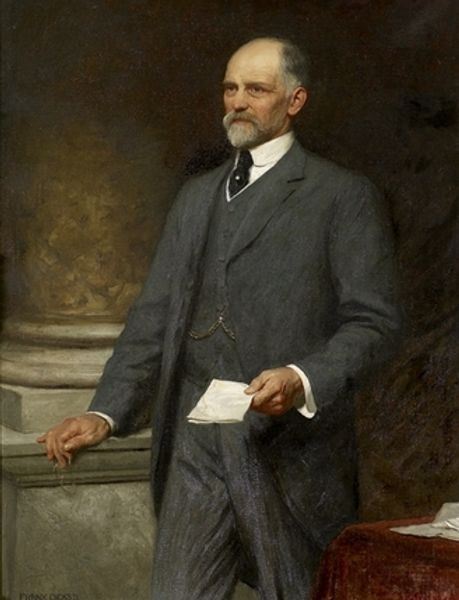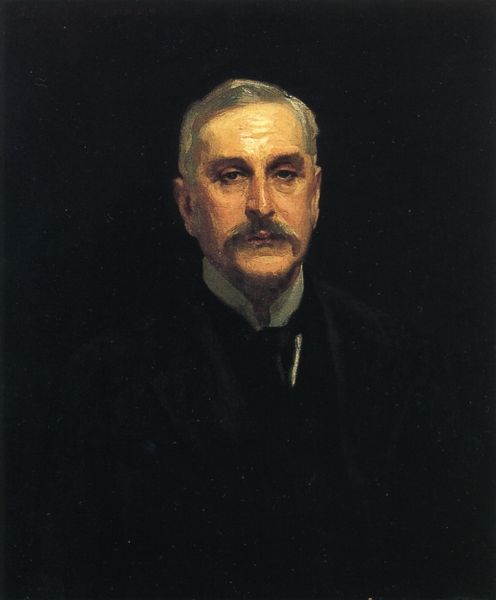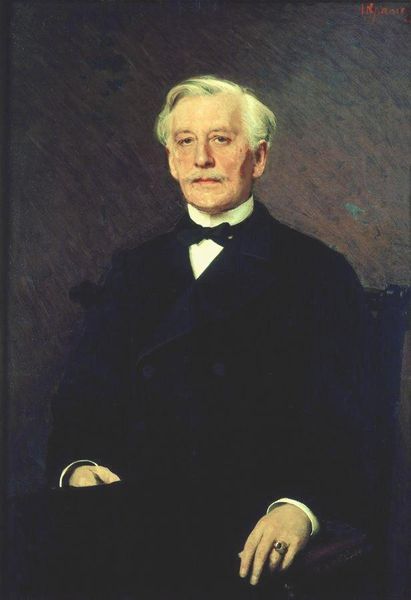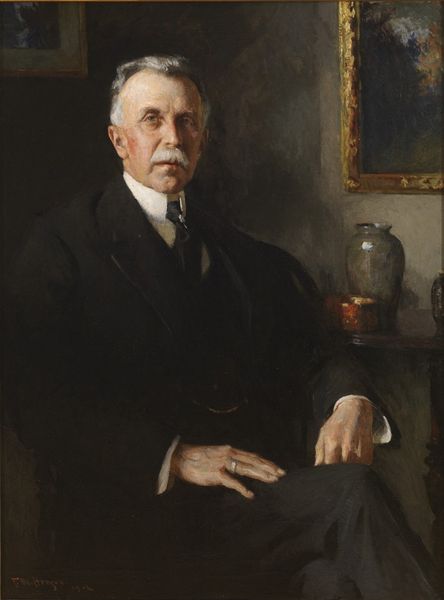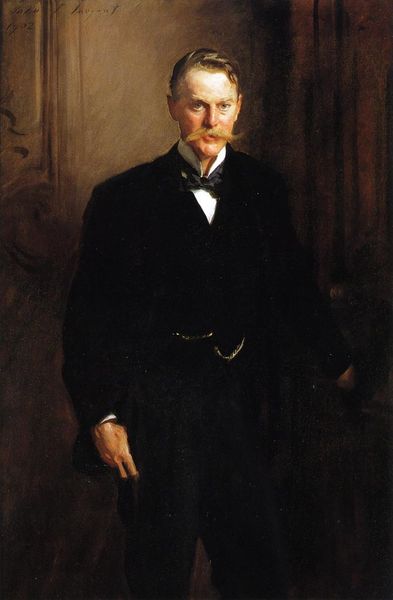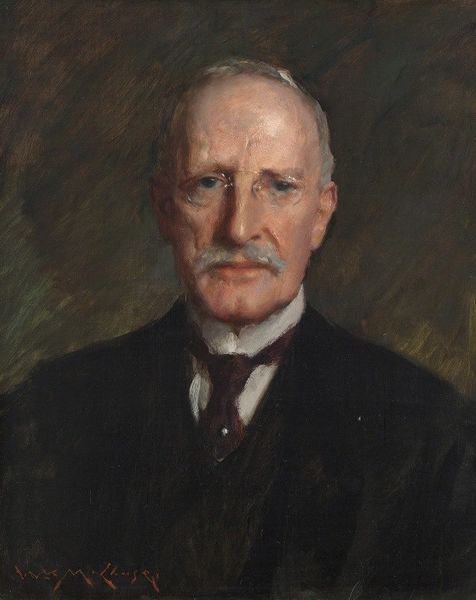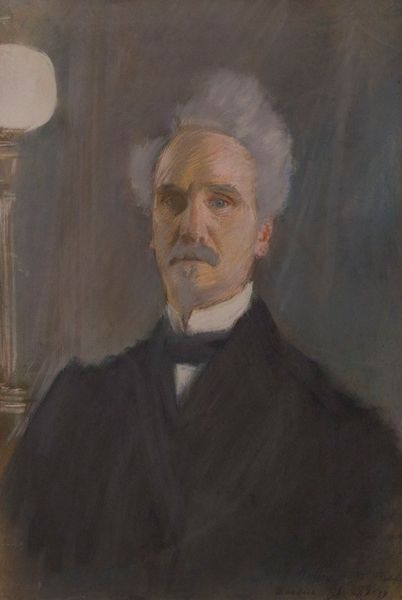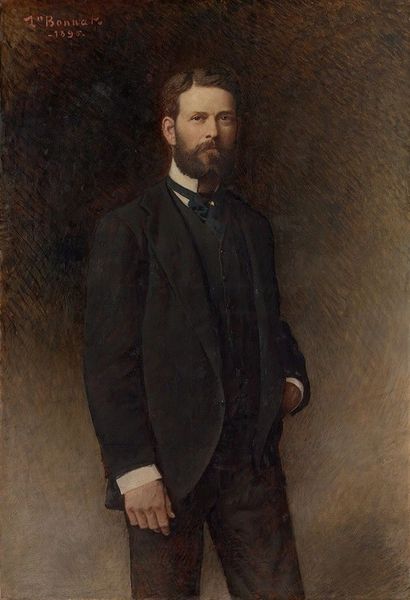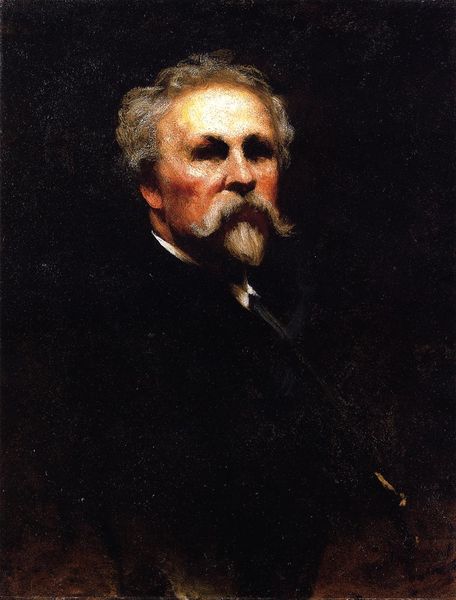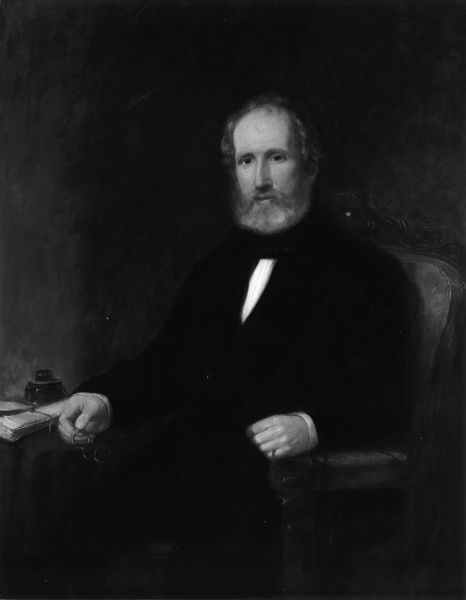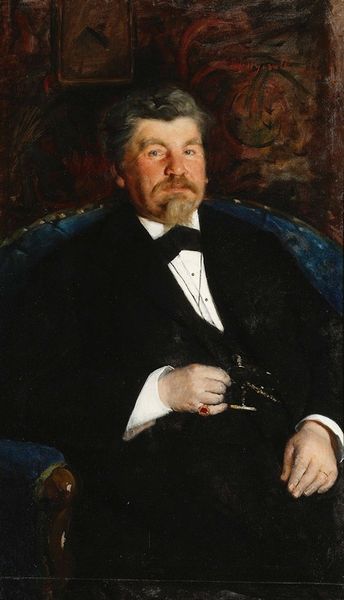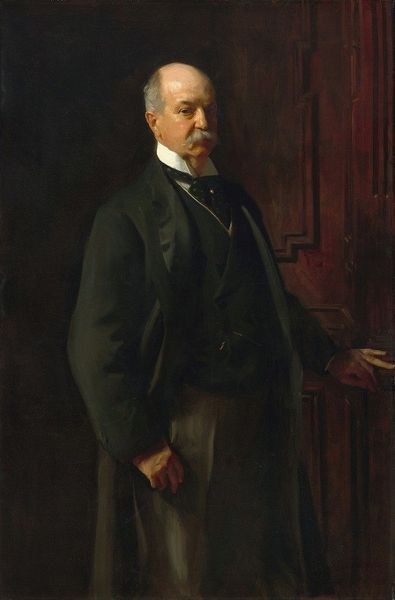
painting, oil-paint
#
portrait
#
portrait
#
painting
#
oil-paint
#
modernism
#
realism
Copyright: Public domain
Editor: Here we have William Logsdail's 1918 portrait of John D. Binns, rendered in oil. It's striking how this man is depicted in profile; the dark suit against the drab background gives the whole composition a somber tone. What is your interpretation? Curator: Indeed. Given its creation in 1918, nearing the end of World War I, and considering the sitter's somber, almost austere, presentation, this portrait becomes a product of its time, reflecting a society deeply affected by conflict. How might this image, in its realism, perform a specific public role? Editor: Perhaps to commemorate this person as an example of seriousness and duty? A figure to emulate? Curator: Possibly. We must also consider the institutions exhibiting this work and their agendas. Knowing where this portrait was displayed originally can tell us who was meant to see it and what values it sought to promote. This realism can thus be understood as serving a purpose that's closely connected to societal power. How might understanding such art change the way that we engage with such official-looking portraiture? Editor: It definitely adds another layer. It goes beyond just aesthetic appreciation and urges us to think about its original function within the cultural landscape. Curator: Precisely! It reminds us that portraits like this are never neutral records. Editor: That is a powerful way to look at it. It encourages critical thought instead of passive observation. Curator: And that makes viewing this portrait today such an insightful journey through history.
Comments
No comments
Be the first to comment and join the conversation on the ultimate creative platform.

